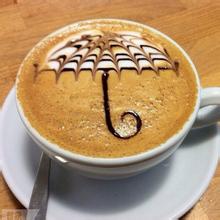A brief introduction to the history and culture of the origin and development of Yega Sheffield Wauka coffee with heavy dried fruit flavor.

We will not forget that Africa is the hometown of coffee. Coffee trees are likely to be found in Ethiopia's KAFFA province. Later, batches of slaves were sold from Africa to Yemen and the Arabian Peninsula, and coffee was taken everywhere along the way. To be sure, Yemen started growing coffee in the 15th century or earlier. Although Arabia had the busiest port city in the world at that time, it banned the export of any seeds. This barrier was finally broken through by the Dutch, who finally smuggled the surviving coffee trees and seeds to the Netherlands in 1616 and began to grow Yegashifi in a greenhouse, nearly 2,000 meters above sea level, one of the highest coffee-producing areas in the world. It has been a wetland since ancient times. "Yirga" means "settle down" and "Cheffe" means "wetland". Lake Turkana, Lake Abaya and Lake Chamo bring abundant water vapor. The Rift Valley, represented by Misty valley, is foggy all the year round, like spring all the year round, with a gentle breeze, cool and humid, and thousands of coffee trees thrive, giving birth to the unique and unpredictable atmosphere of Yejia Xuefei's unique fragrance of flowers and fruits.
European monastic academics opened up a local coffee growing industry, which was later run by coffee communities or cooperatives in villages around the town. There are no special plantations here, and coffee trees are naturally scattered in the forest and countryside. During the harvest season, the Ethiopian Coffee Trading Company will go to town to buy coffee beans collected by farmers and eventually sell them under the brand name "Yega Xuefei".
Yega Chuefei exudes an extremely complex aroma and shows an extremely excellent taste that is difficult to describe. In general, the dry aroma of Yega Chuefei is full of fruit, with strong aromas of dried fruit, strawberry, mango and apricot jam. Wet fragrance is like sweet syrup, like sticky apricot juice, wrapped in plain honey or chocolate. The entrance is not strong, the mellow thickness is medium, the acidity is not obvious, but it is lively and bright, like fruit black tea.
In 1972, Ethiopia introduced Central and South American water washing technology to improve its quality, which made its jasmine and citrus fragrance clearer and more refined. It has become the best product of the world's boutique beans, and its superb washing technology has played an important role. Since the 1970s, it has basically been washed. However, in the past two years, Yega Snow has been out of order. Frequently launch amazing sun beans! There is a strict standard for collecting red fruits (as a result of coffee trees). Before exposure to coffee fruits, unripe green fruits or defective fruits are removed manually, and damaged or moldy fruits are removed during the sun drying process. after two weeks, the sugar and essence of the flesh and essence seep into the coffee beans, the water content is reduced to 12%, and then scrape the hardened pulp, pectin layer and pods with a planer. Take out the coffee beans and test the density and color of the beans. After eliminating the defective beans, the workers finally picked out the defective beans with the naked eye and screened them layer by layer, resulting in the cleanliness and vulgarity of the Yirgacheffe sun-dried beans, and the strong charming fruit aroma of Ethiopia's Yega Xuefei coffee, though petite, is gentle and delicate, sweet and lovely. As the hometown of coffee, thousands of years of planting history and processing tradition in Ethiopia have created high-quality washed Arabica beans. Light baked with unique sweet aromas of lemon, flowers and honey, soft acidity and citrus flavors, fresh and bright on the palate. No milk or sugar, let the rich texture and unique soft flower scent brush your taste buds, leaving an endless aftertaste.
Planting:
Coffee trees are mostly planted in farmers' own backyard or mixed with other crops in the field, the yield per household is not much, it is a typical rural coffee. These mountain villages are foggy, like spring all year round, with a gentle breeze in summer, cool but not hot, rain but not damp, and no cold damage in winter, giving birth to a unique regional flavor of citrus and flowers.
Taste:
The so-called "Yejia Snow Flavor" refers to the strong aromas of jasmine, lemon, peach, almond and tea. Tasting experience has only one sentence: coffee entrance, flowers in full bloom! Just like a flower touches the comfort of taste buds and olfactory cells in the nasal cavity. In addition to the fragrance of the flowers, the delicate and mellow thickness (body) is like silk massage in the mouth, and the wonderful touch of Yega Sheffei Coffee refers to the Yega Sheffield Coffee produced in Ethiopia. Yejia Xuefei is the name of a local town, about 1700 to 2100 meters above sea level. It has been a wetland since ancient times, and the ancient saying [yirga] means "settle down], and [cheffe] means [wetland], so [Yega Xuefen] means [let us settle down in this wetland]. It is one of the coffee producing areas with the highest average elevation in Ethiopia. Now Yejasuffi coffee has become synonymous with Ethiopian boutique coffee.
Anchor China Coffee Network
Yejassefi's coffee trees were planted by European monks (a bit like Belgian monks growing wheat to brew beer) and were later transferred to farmers or cooperatives. Yejia Chuefei is actually constructed by surrounding coffee communities or cooperatives, including Edido Idido, Hafusa Harfusa, Hama Hama and Biloya near Fog Valley Misty valley, all washed with water, but there are also a small number of off-product beans engraved with sun to enhance the charming fruit aroma and mellow thickness. These mountain villages are foggy, like spring all year round, with a gentle breeze in summer, cool but not hot, rain but not damp, and no cold damage in winter, giving birth to a unique regional flavor of citrus and flowers. Coffee trees are mostly planted in farmers' own backyard or mixed with other crops in the field, the yield per household is not much, it is a typical rural coffee. Yega Xuefei won the prize beans almost from the above-mentioned coffee villages and communities.
The so-called "Yega Chuefei" refers to the strong aromas of jasmine, lemon or lime acid, as well as peach, almond or tea. This season, the dried blueberry flavor of Chevy is particularly prominent. After grinding, the room full of blueberries is a by-product area of Sidamo province in Sidamo, Ethiopia. Located in the northwest of Sidamo, it is one of the highest coffee-producing areas in Ethiopia. However, the mode of production and flavor here are so prominent that Ethiopian coffee farmers compete to be proud of the flavor of their coffee, so they are independent from Sidamo and have their own style. It has also become the most famous producing area in Africa. When talking about Ethiopia, let's first talk about the origin of coffee. In about the sixth century, an Arab shepherd Kardai was herding sheep to the Ethiopian grasslands for grazing. He was surprised to see that each goat was extremely excited and excited. Later, after careful observation, he found that the sheep were excited only after eating some kind of red fruit. Cardai tasted some of them curiously. He found that these fruits were very sweet and delicious, and he felt very refreshed after eating. From then on, he often drove the sheep to eat this delicious fruit. Later, a Muslim passed by and took some of this incredible red fruit home and distributed it to other parishioners, so its magical effect spread.
Important Notice :
前街咖啡 FrontStreet Coffee has moved to new addredd:
FrontStreet Coffee Address: 315,Donghua East Road,GuangZhou
Tel:020 38364473
- Prev

A brief introduction to the description of the flavor and aroma characteristics of the sweet Yega Sheffield Wauka coffee.
Harm, giving birth to a unique regional flavor of citrus and flowers. Palate: the so-called Yega Snow Flavor refers to strong aromas of jasmine, lemon, peach, almond and tea. Tasting experience has only one sentence: coffee entrance, flowers in full bloom! Just like a flower touches the comfort of taste buds and olfactory cells in the nasal cavity. In addition to the fragrance of the flowers, the delicate mellow thickness (body) is like silk massage in the mouth.
- Next

A brief introduction to the Market Price of Ethiopia's Yega Sheffivoka Coffee Variety with rich fruity aroma
It has become the best product of the world's fine beans, thanks to its exquisite washing technology, which has been mainly washed since the 1970s. However, in the past two years, Yejia snow coffee has been out of the ordinary, frequently launching amazing sun-dried beans! There is a strict standard for collecting red fruits (as a result of coffee trees) in the sun. Before exposure to coffee fruits, unripe green fruits or defective fruits are manually removed and sunburned.
Related
- Detailed explanation of Jadeite planting Land in Panamanian Jadeite Manor introduction to the grading system of Jadeite competitive bidding, Red bid, Green bid and Rose Summer
- Story of Coffee planting in Brenka region of Costa Rica Stonehenge Manor anaerobic heavy honey treatment of flavor mouth
- What's on the barrel of Blue Mountain Coffee beans?
- Can American coffee also pull flowers? How to use hot American style to pull out a good-looking pattern?
- Can you make a cold extract with coffee beans? What is the right proportion for cold-extracted coffee formula?
- Indonesian PWN Gold Mandrine Coffee Origin Features Flavor How to Chong? Mandolin coffee is American.
- A brief introduction to the flavor characteristics of Brazilian yellow bourbon coffee beans
- What is the effect of different water quality on the flavor of cold-extracted coffee? What kind of water is best for brewing coffee?
- Why do you think of Rose Summer whenever you mention Panamanian coffee?
- Introduction to the characteristics of authentic blue mountain coffee bean producing areas? What is the CIB Coffee Authority in Jamaica?

